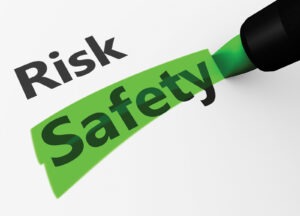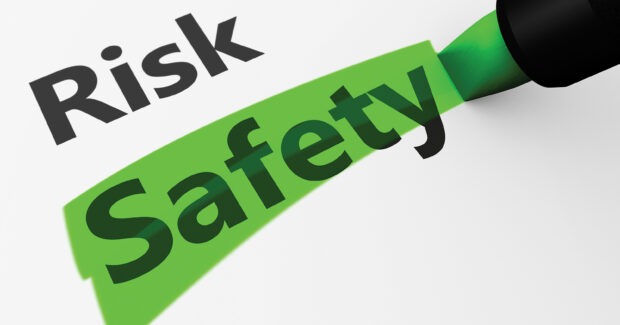2024 Metalworking Risk Roundup: Inflation, Weather, Workforce
Elevated costs, materials, and labor headline a series of financial risks and insurance considerations for the industry.
Posted: January 22, 2024

The manufacturing sector is headed for a pivotal year in 2024. As of November, manufacturing output rose 0.3%. While the number indicates positive momentum, it’s below the levels seen last year. Today’s key indicators have left room for financial uncertainty. The same uncertainty has metalworking businesses divided on their forecasts.
Take, for instance, the most recent findings by the Precision Metalforming Association (PMA):
- 57% of metal forming companies expect no change in general economic activity
- 30% predict a decrease in activity
- 13% anticipate an increase in activity
With uncertainty looming large, navigating financial risks will be a key to success in 2024. That includes your insurance — which acts as a safety net against unexpected costs. But only if it’s updated for today’s risks. Here’s a closer look at the risks to monitor, what they mean for your insurance, and how you can stay protected.
1. As inflation cools, high costs remain, raising the price of replacing property.
Inflation is easing based on recent measures. Yet, if you look within your own operations, you may not feel the benefit. That’s because the core costs to your business likely remain much higher than they were two or three years ago. Two of those core costs are your building and equipment. Now imagine how much it would cost to repair if they were damaged.
The challenge: It costs 34% more to repair commercial machinery today than in 2020. During the same span, if your building were severely damaged today, it would also cost 38% more to construct a new industrial facility. Even metal products remain 35% higher than three years ago.
The risk: Although inflation is slowing, the price of materials and labor needed to repair or replace damaged property remains high. If your insurance hasn’t kept pace — or doesn’t reflect today’s property values — you may not have enough insurance to cover repair costs.
What it means for your insurance: Review your insurance policy and complete an updated property valuation. This includes your specialized fabricating equipment. Your insurer can help you calculate the replacement cost of your property, instead of the market value.
This is a key distinction because it often costs more to repair or replace property due to the costs of parts and labor. By accounting for inflated costs, you can help mitigate out-of-pocket setbacks.
Example: Imagine a hypothetical scenario where a metalworking shop’s laser cutting system catches fire. Pre-inflation, equipment replacement might have cost $100,000. However, with inflated costs, the actual repair bill is now $135,000. If their insurance policy is based on the outdated $100,000 estimate, the shop will have to pay the remaining $35,000 out of pocket. This scenario — and cost — could apply on a much larger scale had the fire spread.
2. Extreme weather, supply chain poses a risk of longer interruptions.
More than one third of manufacturers report supply chain issues as their biggest challenge. It’s an issue that has forced metalworkers to rethink their overall strategy in recent years. Unfortunately, supply chain disruptions aren’t limited to daily operations. Extreme weather events are growing in frequency and severity throughout many regions of the country — affecting businesses, and material availability, in their path.
- The challenge: There were 25 weather events that exceeded $1 billion in cost within the United States in 2023. With limited building parts, specialized equipment, and a shortage of contractors — it now takes longer to rebuild your business due to supply chain delays.
- The risk: Convective storms, tornados, and fires can all lead to significant property damage. It halts production. In fact, the costs associated with a business interruption can often outweigh the costs of physical property damage. It can lead to lost profits and mounting expenses — while still needing to pay your employees. It’s a confluence of risks — and costs — that can put manufacturers out of business.
What it means for your insurance: With supply chain delays, we’re urging manufacturers to account for longer recovery times. In the past, it may have taken 12 months to restore a business. Today, we’re encouraging businesses to consider up to 24 months in their business interruption coverage. For a calculation specific to your business, start by estimating 12-to-24 months of lost profit, fixed costs like payroll, and temporary location expenses.
Example: Let’s use another hypothetical example. This time a business was unexpectedly damaged by a tornado on June 1st. Due to demand surge in the region, contractors estimated it would take 20 months to rebuild their business. Thankfully, the metalworking shop had recently extended their business interruption coverage to 24 months at renewal.
They were able to pay for a temporary facility and partially resume their operations within four months. Meanwhile, their coverage helped the business retain staff and pay for the lost profit they incurred from production delays. Today, they’re still in business and back to serving customers.
3. Skilled labor availability puts a spotlight on worker safety.
The search for skilled labor continues to lead most industry conversations. As job openings get harder to fill, businesses can’t afford to lose the experienced employees within their business. The challenge: 72% of manufacturers said attracting and retaining a quality workforce was their top challenge in a Q3 survey. Meanwhile, injuries and illnesses are up 7.5% according to the BLS.
The risk: The rise in injuries — combined with a shortage of available workers — means metalworking businesses may have more open positions, not less.
If a worker is injured, you’ll either need to temporarily fill their position with a qualified candidate to meet production deadlines or ask existing staff to handle more duties. The former comes with added costs and delays, while the latter could lead to additional safety risks.
What it means for your insurance: The advice here is simple: invest in safety. If you can show a history of low workplace injuries, you may see lower workers’ compensation insurance premiums. In the near term, update your workplace safety program and provide ongoing training to new and existing employees.
Example: Here’s one more hypothetical. A manufacturer is unable to find qualified workers to operate its machinery. They were fortunate to finally hire a qualified candidate but hadn’t properly trained them during the onboarding process.
Later, the worker made a mistake while operating the machine, leading to a serious accident. The accident may have been prevented with proper training. Now, the company is understaffed and unable to find a skilled worker to operate its equipment — leading to delayed orders and higher costs.
The Bottom Line
If the past few years are any indication, the metalworking industry adapts to change. Still, one trait defines the most successful manufacturers. They take a proactive approach to risk. It keeps their employees, and their business, protected. As we head into a new year, more uncertainty is expected. Prepare now, rather than later. The topics I’ve shared here can help you get the conversation started. Your insurer or local experts can provide more targeted advice specific to your business.












